|
|
|
| Stones River Campaign | Morning December 31 | Afternoon December 31 | January 2 1863 |
|
 Winter Lightning: A Guide to the Battle of Stones River Lincoln thanked Rosecrans saying that the nation could not have taken another defeat. Additionally, Lincoln said he would remember this victory as long as he lived  The Edge of Glory: A Biography of General William S. Rosecrans, U.S.A The best biography on William Rosecrans despite having been published over 40 years ago. William Lamers, who was a school official and not a historian, was looking at a limited portion of his subject's career |
Kindle Available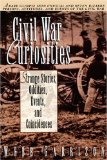 Civil War Curiosities: Strange Stories, Oddities, Events, and Coincidences |
 Battle of Stones River - Civil War Panoramic Map 12 in. x 9 in. Buy at AllPosters.com Framed Mounted |
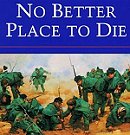 No Better Place to Die The Battle of Stones River The forces of Braxton Bragg came very close to victory. But the star-crossed Confederate general ended up withdrawing, leaving Rosecrans' Union forces to claim victory by holding the field of battle |
On December 26, 1862, the Union Army of the Cumberland left Nashville to engage Braxton Bragg's Army of Tennessee. General William S. Rosecrans sent the three wings of his army on different routes in search of the Rebel army. Rain, sleet and fog combined with spirited resistance from Confederate cavalry slowed the Federal advance. By the evening of December 30, 1862 both armies faced each other in the fields and forests west and south of Murfreesboro. During the night, Bragg and Rosecrans planned their attacks. Both chose to attack the right flank of the enemy and cut off their supply line and escape route. Bragg extended his lines to the south using all but General John C. Breckinridge's Division of General William Hardee's Corps. This movement of troops left only Breckinridge's men to face Rosecrans's planned onslaught on the east bank of the Stones River with General Thomas J. Crittenden's Left Wing. While the generals planned, then men lay down in the mud and rocks trying to get some sleep. The bands of both armies played tunes to raise the men's spirits. It was during this "battle of the bands" that one of the most poignant moments of the war occurred. Sam Seay of the First Tennessee Infantry described what happened that evening. “Just before ‘tattoo' the military bands on each side began their evening music. The still winter night carried their strains to great distance. At every pause on our side, far away could be heard the military bands of the other. Finally one of them struck up ‘Home Sweet Home.' As if by common consent, all other airs ceased, and the bands of both armies as far as the ear could reach, joined in the refrain. Who knows how many hearts were bold next day by reason of that air?” |
Campaigns of the Civil War
Civil War Exhibits
Timeline of the War
State Battle Maps
Civil War Navy Ships
Civil War Summary
Civil War Picture Album
Women of the Civil War
Civil War Submarines
Kindle Available Advance And Retreat: Personal Experiences In The United States And Confederate States Armies John Bell Hood entered the Confederate Army at 29, loyal to Confederate Independence. He led his men into the battles of Second Manassas, Gaines's Mill, Sharpsburg, Fredericksburg, Gettysburg, and Chickamauga |
Kindle Available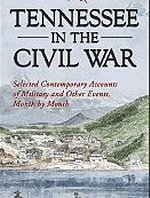 Tennessee in the Civil War Selected Contemporary Accounts of Military and Other Events, Month by Month |
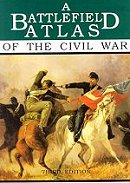 A Battlefield Atlas of the Civil War Informative text enhanced 24 three-color maps and 30 black/white historical photographs. |
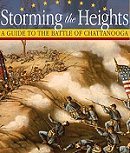 Storming the Heights A Guide to the Battle of Chattanooga The Confederate victory of Chickamauga drove the Union Army of the Cumberland back to the key railroad hub of Chattanooga. In early October it had appeared that all Union gains in southern Tennessee might be lost |
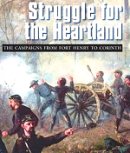 Struggle for the Heartland: The Campaigns from Fort Henry to Corinth The military campaign that began in early 1862 with the advance to Fort Henry and culminated in late May with the capture of Corinth, Mississippi. The first significant Northern penetration into the Confederate west |
 Encyclopedia of the American Civil War: A Political, Social, and Military History Definitive Reference Work, this volume, rich with over 500 illustrations, 75 maps, and 250 primary source documents, offers more than 1,600 entries that chart the war's strategic aims, analyze diplomatic and political maneuvering, describe key military actions, sketch important participants, assess developments in military science, and discuss the social and financial impact of the conflict. |
Kindle Available A South Divided: Portraits of Dissent in the Confederacy An account of Southern dissidents in the Civil War, at times labeled as traitors, Tories, deserters, or mossbacks during the war and loyalists, Lincoln loyalists, and Unionists by historians of the war |
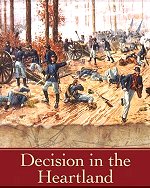 Decision in the Heartland The Civil War in the West The western campaigns cost the Confederacy vast territories, the manufacturing of Nashville, the financial center of New Orleans, communication hub Corinth, Chattanooga, and Atlanta, along with the breadbasket of the Confederacy. |
 If You Lived at the Time of the Civil War All of the "If you Lived at the Time of..." books are great for kids, and also a nice, quick read for adults! What I like about them is their layout, which is easy for readers to follow. Each page begins with a question, "Would you have seen a battle in the South?" for example. Nicely drawn illustrations accompany each answer. |
 Day Of Tears Through flashbacks and flash-forwards, and shifting first-person points of view, readers will travel with Emma and others through time and place, and come to understand that every decision has its consequences, and final judgment is passed down not by man, but by his maker. |
Kindle Available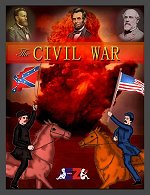 The Civil War Introduces young readers to the harrowing true story of the American Civil War and its immediate aftermath. A surprisingly detailed battle-by-battle account of America's deadliest conflict ensues, culminating in the restoration of the Union followed by the tragic assassination of President Lincoln |
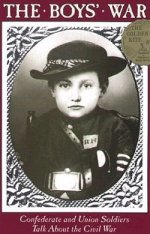 The Boys War With the many boys who fought in the civil war most of them lied about their age. A lot of them wrote letters or had a diary. Johnny Clem had run away from his home at 11. At age 12 he tried to enlist but they refused to let him join because he was clearly too young. The next day he came back to join as a drummer boy. |
|
Books Civil War Womens Subjects Young Readers Military History DVDs Confederate Store Civil War Games Music CDs Reenactors |
Sources:
United States Military Academy
Library of Congress
National Park Service